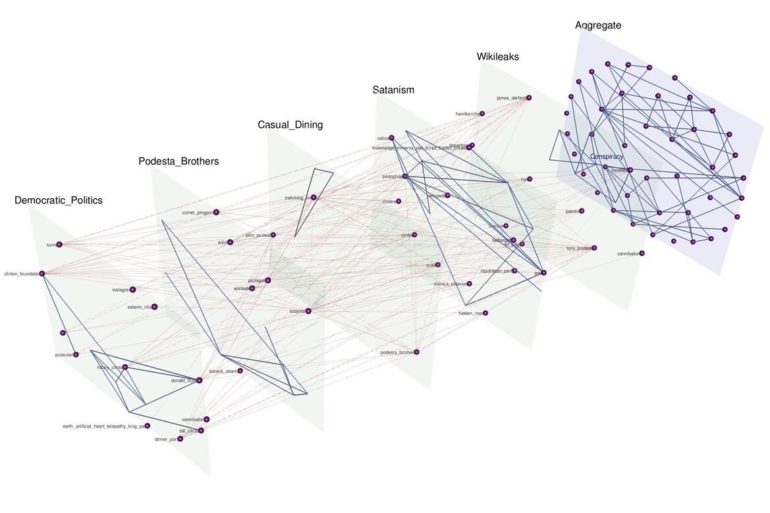A new study by UCLA professors offers a new way to understand how unfounded conspiracy theories emerge online. The research, which combines sophisticated artificial intelligence and a deep knowledge of how folklore is structured, explains how unrelated facts and false information can connect into a narrative framework that would quickly fall apart if some of those elements are taken out of the mix.
The authors, from the UCLA College and the UCLA Samueli School of Engineering, illustrated the difference in the storytelling elements of a debunked conspiracy theory and those that emerged when journalists covered an actual event in the news media. Their approach could help shed light on how and why other conspiracy theories, including those around COVID-19, spread—even in the absence of facts.
The study, published in the journal PLOS ONE, analyzed the spread of news about the 2013 “Bridgegate” scandal in New Jersey—an actual conspiracy—and the spread of misinformation about the 2016 ‘Pizzagate’ myth, the completely fabricated conspiracy theory that a Washington, D.C., pizza restaurant was the center of a child sex-trafficking ring that involved prominent Democratic Party officials, including Hillary Clinton.
The researchers used machine learning, a form of artificial intelligence, to analyze the information that spread online about the Pizzagate story. The AI automatically can tease out all of the people, places, things and organizations in a story spreading online—whether the story is true or fabricated—and identify how they are…



